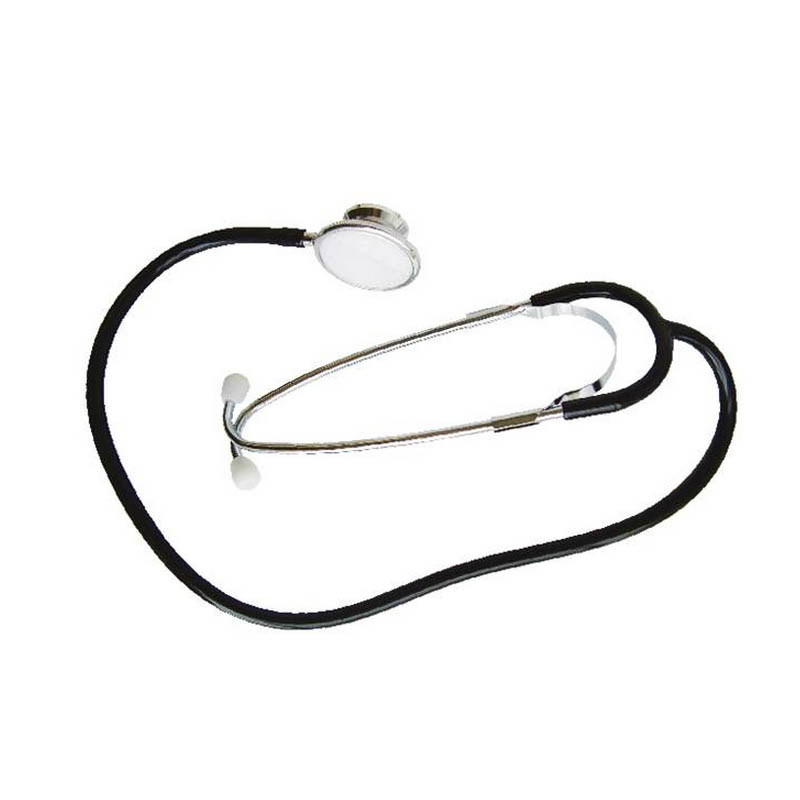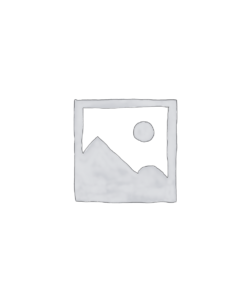Description
A stethoscope is a medical instrument for listening to the action of someone’s heart or breathing, typically having a small disc-shaped resonator that is placed against the chest, and two tubes connected to earpieces.
This universal stethoscope is non-sterile, and is latex free. It is black in colour.
Uses
A stethoscopes primary use is to listen to sounds generated from within the body. One can listen to the heart, lungs and intestinal tract. They are also used for measuring blood pressure. A stethoscope consists of a “head” or chest piece, a tube and a head piece with so-called “ear tips”. These “ear-tips” seal auditory canals of the examiner, enabling them to be able to listen carefully to the sounds within the body.
Application
Before placing the ear tips in your ears, hold the headset in front of you with the eartubes pointing away.
Once the ear tips are in your ears, they should point forward.
If the fit still isn’t comfortable, grasp each of the eartubes and adjust the headset for a custom fit.
Wearing the headset improperly can result in a poor acoustical seal and in some cases, complete sound blockage.
If you usually carry your stethoscope in a pocket or don’t clean it often, lint or dirt may accumulate and obstruct the sound pathway. To prevent debris from accumulating, give your stethoscope routine cleaning and care.
When listening for normal resting heart rates:
New-borns up to one month old: 70-190 beats per minute
Infants 1 – 11 months old: 80 – 160 beats per minute
Children 1 – 2 years old: 80 – 130 beats per minute
Children 3 – 4 years old: 80 – 120 beats per minute
Children 5 – 6 years old: 75 – 115 beats per minute
Children 7 – 9 years old: 70 – 110 beats per minute
Adults and children over 10 years old: 60-100 beats per minute.
Well-trained athletes: 40-60 beats per minute.
When listening to the lungs:
There are four types of abnormal breath sounds that can be heard from the lungs:
Wheezing sounds like a high pitched sound when the person exhales, and sometimes when they inhale as well.
Stridor sounds like high-pitched musical breathing, similar to wheezing, heard most often when the patient inhales. Caused by a blockage in the back of the throat.
Rhonchi sounds like snoring. Rhonchi happens because the air is following a “rough” path through the lungs or because it is blocked.
Rales sounds like popping bubble wrap or rattling in the lungs. Rales can be heard when a person inhales.
When listening to abdominal sounds:
No bowel sounds: that may mean that something is blocked in the patient’s stomach. It can also indicate constipation and bowel sounds may return on their own.
If the patient has hyperactive bowel sounds followed by a lack of bowel sounds, that could indicate that there has been a rupture of the bowel tissue.
If the patient has very high-pitched bowel sounds, there could be an obstruction in the patient’s bowels.
Slow bowel sounds may be caused by prescription drugs, spinal anesthesia, infection, trauma, abdominal surgery, or overexpansion of the bowel.
Fast/hyperactive bowel sounds can be caused by Crohn’s disease, a gastrointestinal bleed, food allergies, diarrhea, infection, and ulcerative colitis.
When checking for blood pressure:
Wrap the blood pressure cuff around your patient’s arm ( place it right above the elbow).
Press the bell of the stethoscope over the brachial artery just below the cuff’s edge.
Inflate the cuff to 30mm above your expected systolic blood pressure.
Listen for Korotkoff sounds (blood flow sounds).
Release and remove the cuff.
Wait a few minutes if you want to check the patient’s blood pressure again.







